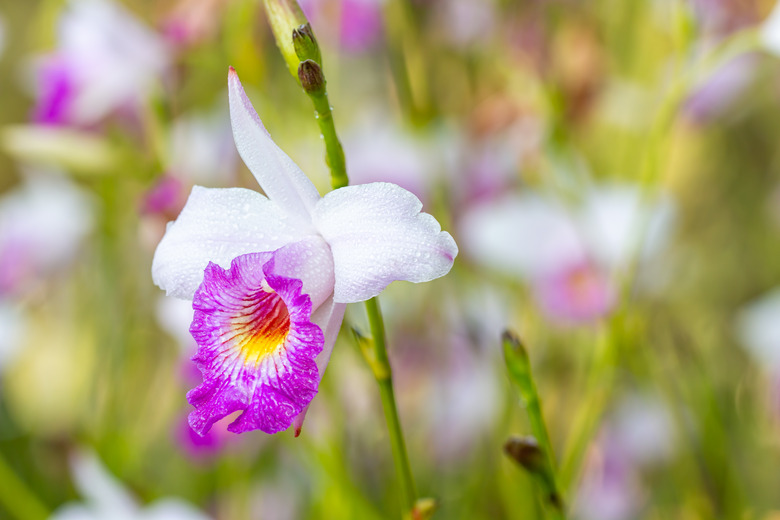How To Care For A Bamboo Orchid
Learning how to care for a bamboo orchid properly helps it thrive, whether you grow it outdoors or as an indoor plant. Native to tropical Asia, the bamboo orchid (Arundina graminifolia, formerly A. barbusifolia) typically grows 4 to 6 feet tall with reedy stems and evergreen, grass-like leaves up to 1 foot long. The 2- to 3-inch-wide flowers appear in clusters at the stems' tips in summer and autumn, each lasting for about three days.
The bamboo orchid's fragrant blooms vary in color from white to pinkish mauve with a darker purple lip. The plant is a perennial only in U.S. Department of Agriculture plant hardiness zones 11 and 12, although some selections may overwinter as far north as USDA zone 9.
Indoor Bamboo Orchid Location
Indoor Bamboo Orchid Location
Due to its large size and preference for high humidity, this orchid generally performs better outdoors than indoors. If you wish to try it as a houseplant, a clump, which usually contains three to five canes, needs a pot at least 12 inches in diameter. The bamboo orchid isn't picky about its medium and can be grown in regular potting soil, sphagnum moss or a more typical orchid mix of 1 part organic potting soil, 1 part coarse orchid bark and 1 part sand.
The bamboo orchid prefers a bright location, so position it on or near a south-facing windowsill where it receives temperatures between 60 and 80 degrees Fahrenheit. It can tolerate full sun, but direct sunlight can burn the leaves or flowers. Bright, indirect light is ideal. Keep the air moist around it by placing it in a humid room, such as a bathroom, or setting it atop a humidity tray. The plant is seldom bothered by pests or diseases.
Indoor Bamboo Orchid Care
Indoor Bamboo Orchid Care
Water the orchid frequently enough that its medium or mix never dries out completely. Water it well, thoroughly moistening all of the soil without leaving the orchid in standing water. In the winter, the bamboo orchid needs less water when it's not actively growing. You can usually water it every one to two weeks during that time. Mist the orchid in the morning when it's particularly dry to give it the humid environment it loves.
Fertilize it once a week from spring to fall with a 20-20-20 plant fertilizer, mixing 1/4 teaspoon of the crystals into 1 gallon of water, or according to label directions if they vary from this rate. Always follow label instructions, which vary among products. If possible, move the plant outdoors during the summer, setting it in shade at first, and gradually accustoming it to full sun.
Outdoor Bamboo Orchid Location
Outdoor Bamboo Orchid Location
If you wish to grow the bamboo orchid outdoors, place it in a protected, raised bed in full or partial sun. That bed should be filled with a humus-rich soil, which is about 2 parts compost, 1 part topsoil and 1 part coarse sand. Space the plants 1 foot apart in that bed and mulch it with 3 inches of shredded bark to keep the soil moist, but don't allow the mulch to touch the plant's stems.
Outdoor Bamboo Orchid Care
Outdoor Bamboo Orchid Care
Water the bed about once every three days when there is no rain, or however often is necessary to prevent the soil from drying out. Bamboo orchids need consistent soil moisture without being overwatered.
Fertilize the orchids once every two months during spring and summer by pulling back the mulch and sprinkling the pellets of an organic fertilizer, such as 5-5-5 around the bases of the plants, using 1 cup for each 20 square feet of bed unless label recommendations differ from this rate.
When all the buds on a cane have bloomed, snip that cane off near soil level with a sterilized pruning tool. This helps the plant to regrow and eventually bloom again.
